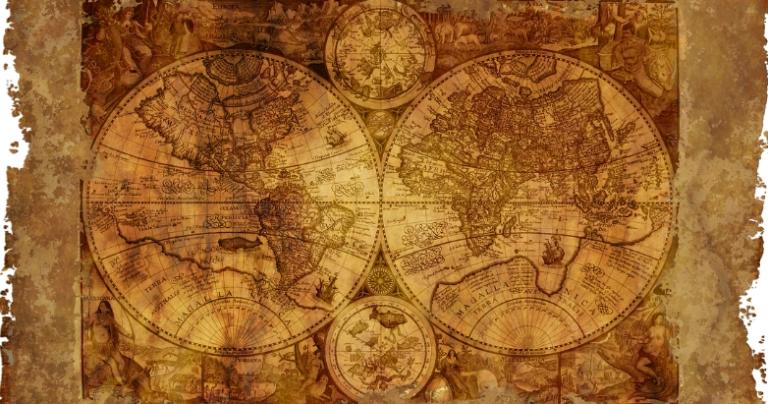
Practicing interspirituality can be confusing. That is why it is important to have a mapping process that allows individuals to piece together how they will use inspiration and practices from various wisdom traditions to aid their spiritual exploration.
Don’t know what interspirituality is? Read this first.
In this article, I will outline the most important processes to consider. In subsequent articles, I will offer a deeper dive into each element to aid during the interspiritual mapping process. The advice I am giving is based on my experience as a veteran interspiritual explorer and my work as an interspiritual coach and guide.
Write Your Spiritual Life Story
Your spiritual life story will offer numerous clues. What is your religious or spiritual background? What ideas and practices have attracted you over the years? Have you had any spiritual experiences? What do you consider to be spiritual? What gives your life meaning, purpose, and direction? When did you decide to open yourself up to interspirituality? What limitations have you encountered in the spiritual and religious philosophies that you’ve been attracted to? Do you engage in any spiritual practices regularly? These and other questions will help you piece together a complete picture of your spiritual life that will inform you going forward.
Intention: The 30.000 Feet View
Interspiritual exploration also encourages us to step back and look at the intention of certain beliefs and practices. Instead of either accepting or rejecting, discernment is needed. What was the intent behind this belief? What were people trying to gain from this practice?
Take note of ideas and practices from different wisdom traditions that appear to have a similar intent. A recent coaching client gave me the perfect example. When she was at Machu Picchu and saw how the Incas revered the condor, she could easily have said, “how stupid of them to worship a bird.” Instead, she said, “the condor flew so high that it disappeared from view; the Incas were worshipping what they saw as a direct line of communication with God.” With that in mind, she could ask: “How do other traditions communicate with the divine?”
The Three Major Stories
Now consider which of the three major religions or spiritual stories your primary beliefs or practices come from. If they include reverence for Gaia, nature mysticism, physical methods, energy sensations, or hallucinatory aids, they are likely pagan. If they include a deity or deities, they are likely theistic, either poly or mono. And they are likely nondualistic if they include nonattachment, introspection, a bare-bones philosophy, and meditative practices. The three stories offer different perspectives, but an interspiritual approach will likely include something from each. People increasingly choose to blend ideas because they don’t find fulfillment in following only one system.
Map Practices in Wilber’s Four Quadrants
Initially, Wilber’s four quadrants of internal singular (mind, emotions), external singular (body), internal plural (social rules, norms and creations, such as language), and external plural (people, places and things) may seem confusing, but what he has really offered us with this philosophy is a way to acknowledge the four perspectives contained in each moment.
When I work with clients, I ask them to list the practices associated with each quadrant. For illustration, here is a simple list of the most common interspiritual practices—found in some form in all traditions—associated with each quadrant.
Common Practices
- Internal singular (individual consciousness): Meditation, prayer, contemplation, experimentation.
- External singular (body): Posture, fasting, chanting, dancing, singing.
- Internal plural (social conscience): Morality, including aspirations and restrictions.
- External plural (social behavior and institutions): Rituals, group gatherings, service.
Mapping these practices often gives a clear picture of what each person is most interested in and offers a path forward to create a genuinely interspiritual approach.
Collect Supporting Beliefs and Philosophies
Once you have a clear view of all your practices, you can divide them into the two major categories of experience; oneness—an introspective path where the primary aim is peace—and goodness—an extroverted path where the primary objective is to be good and do good. Doing this helps orient your spiritual journey. As you look at the list of practices and their connection to either oneness or goodness, think about the beliefs and philosophies that guide you. What urges you to seek inner peace? What encourages you to be good? Write it down to get a clearer picture.
Good Place to Pause
Once you have written your story, explored intention, noticed which of the three major stories influence you the most, mapped your practices in the four quadrants, and collected beliefs and philosophies in connection to the two main experiential paths of oneness and goodness, it is a good time to pause and review where you are on the spiritual path. Do you want to add something to your practice? Subtract something? What is helping? What is hindering? Where are the major paradoxes? Can you see how new information and techniques can fit into your current map?
Confusion or Clarity?
The goal of this process is to create clarity rather than confusion. If the mapping process becomes confusing, it is better to abandon it or ask for help than continue. But if you gain clarity and begin to see how the bigger picture fits together, you are on the right track. That is the purpose of this mapping process, to allow you to honor what you’ve already done and show how you can add to your interspiritual understanding.
Supplemental Mapping
Although the initial mapping process is usually enough to create a coherent interspiritual approach, I’ve found that two other processes can give even more clarity.
Seven Needs
One is to look at the seven chakras or seven human needs, as I dubbed them in my 2006 book, and relate each to your spiritual journey. How do you utilize the (1) body, (2) energy, (3) self-identity, (4) emotions, (5) expression, (6) intellect/intuition, and (7) consciousness to aid your spiritual journey? Are there any imbalances that can derail you? What about your strengths and weaknesses? How do they show up in relation to the seven needs?
Three Driving Forces
The other is to explore three driving forces that the Indian rishis and Greek philosophers agreed on. The Indians claimed that humans had three dominant character types; action-oriented, emotional and intellectual. The Greeks said three things drove human behavior; desire, emotion and intellect. Understanding which of the three is dominant in your life can help you practice interspirituality. Instead of trying to be like others, you can honor your natural inclinations.
Needs More Explanation
Maybe you’ve taken to this mapping process like fish to water. However, if you need more information and clarification, don’t worry. Subscribe to this publication. I will write more about each aspect of the mapping process in the coming weeks and months.
In the meantime, you can read through the article again and extract what you think is helpful. Feel free to discard the rest. This is your interspiritual journey, after all.
Gudjon Bergmann
Author and Mindfulness Teacher
Amazon Author Profile
Recommended books by GB:
- Monk of All Faiths: Inspired by The Prophet (fiction)
- Spiritual in My Own Way (memoir)
- Co-Human Harmony: Using Our Shared Humanity to Bridge Divides (nonfiction)
- Experifaith: At the Heart of Every Religion (nonfiction)
- Premature Holiness: Five Weeks at the Ashram (novel)
- The Meditating Psychiatrist Who Tried to Kill Himself (novel)
Picture: CC0 License












